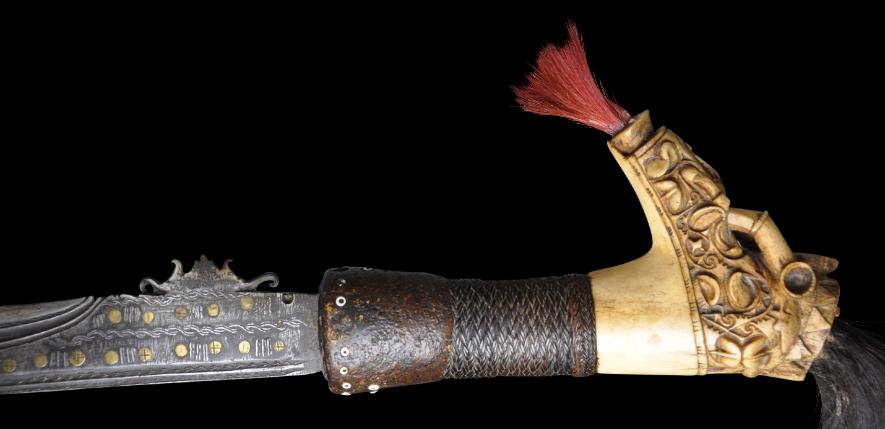
Dayak Mandau Sword
Exceptional Mandau Sword
Dayak People, Borneo, Malaysia/Indonesia
19th century
length: 74cm
This heavy and well-balanced machete-like mandau Dayak sword is notable for its excellent patina, for the quality of its brass-inlaid blade, the quality of its carved scabbard, the fineness and patina of the associated woven fern fibre, and the completeness and quality of the deer antler or horn hilt. In short, it is an excellent example that clearly dates to the nineteenth century.
It is from the Dayak people and most probably from the Iban, a sub-group of the Dayak, who in the past were known as the Sea Dayaks. Ibans were renowned for their headhunting.
The hilt is made of carved deer horn. According to Heppell (2005, p. 125) the carving is based on scrolls and leech motifs. The leech (
lemetek) is associated with blood sucking and so was considered an appropriate motif for a weapon. A spirit of a trophy head with long fangs is also carved into the horn, its torso and legs rising out of leech motifs. Two tufts of hair issue from the hilt – one shorter and coloured red and the other long and black.
The woven or plaited dark brown fibre of the g
leichenia linearis fern has been used to lash the hilt to the blade which constitutes the grip, and to make straps to keep the wooden casing of the scabbard together. The plaiting is very fine and has a splendid patina – the age is particularly evident. The lower grip is embellished with a thick ring of resin (damar) inset with small white glass beads (some deficient).
The blade is heavy and of hardened iron, is curved and single edged. It is smithed with piercing incised-work and fretwork, and is inlaid with brass.
The scabbard is of two pieces of carved wood held together with fern and rattan binding. It is carved with Dayak motifs and has remnants of a tuft of hair. It has a deep, glossy patina as does the fern and rattan binding.
Overall, this is an excellent example, and most probably has been in the UK since the colonial era.
References
Heppell, M., et al, Iban Art: Sexual Selection and Severed Heads, C. Zwartenkot/Kit Publishers, 2005.
Sellato, B. (ed.),
Plaited Arts from the Borneo Rainforest, NIAS Press, 2012.
Van Zonneveld, A.,
Traditional Weapons of the Indonesian Archipelago, C. Zwartenkot Art Books, 2001.Provenance:
UK art market
Inventory no.: 3219
SOLD

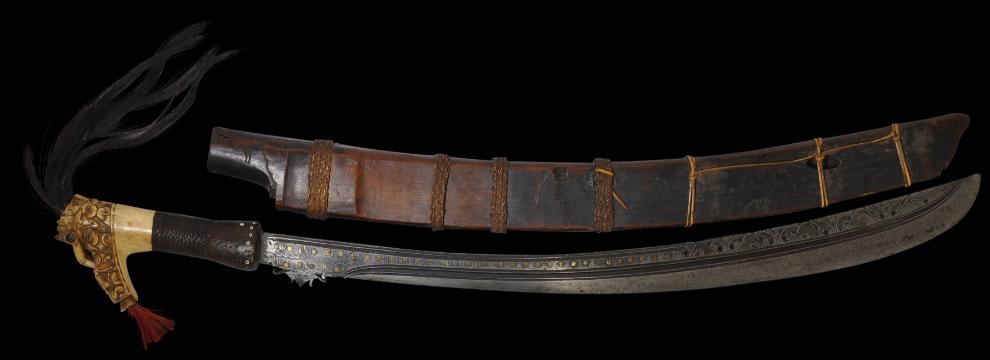

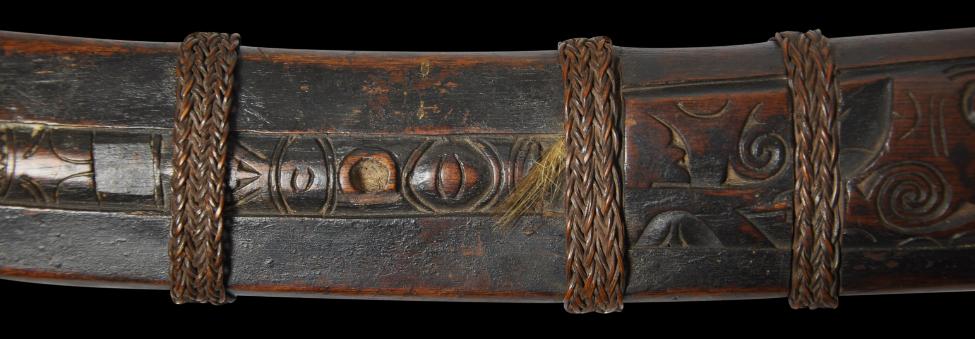

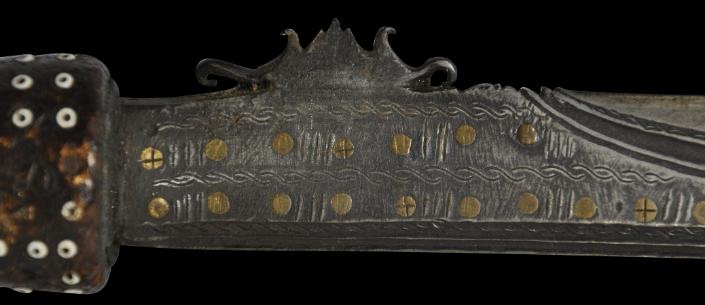


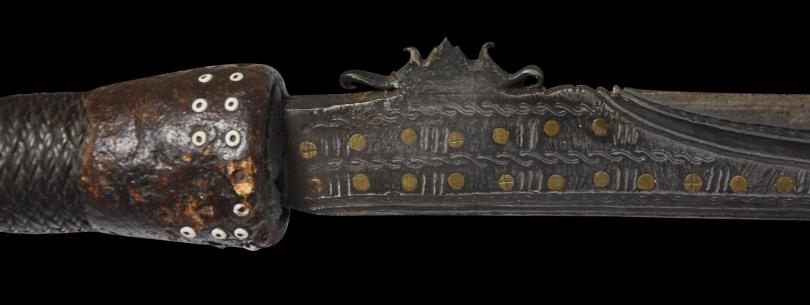
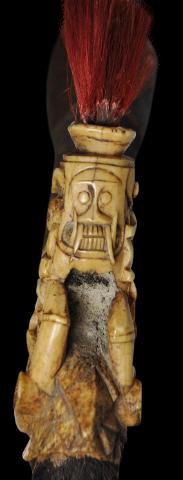
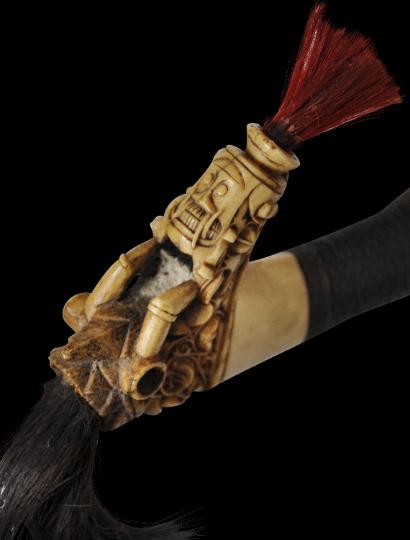
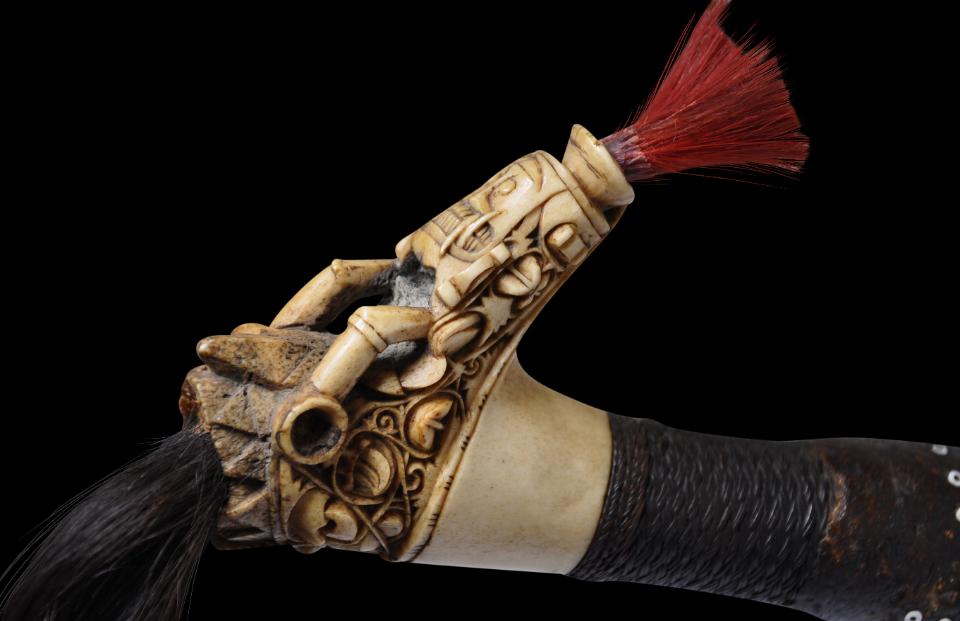
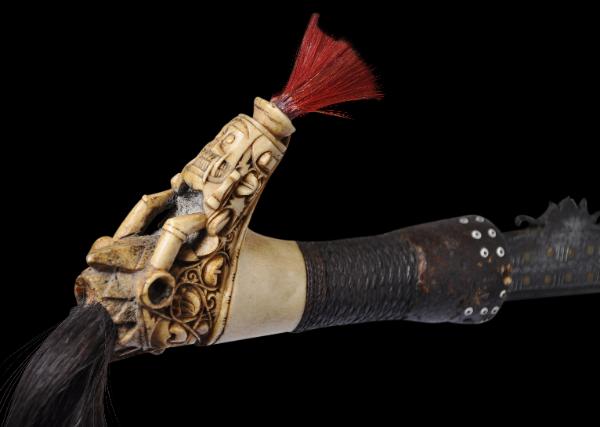

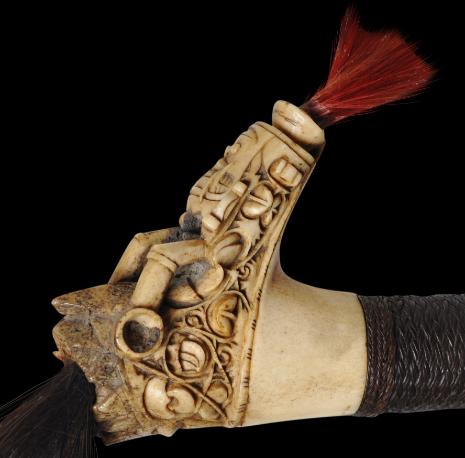
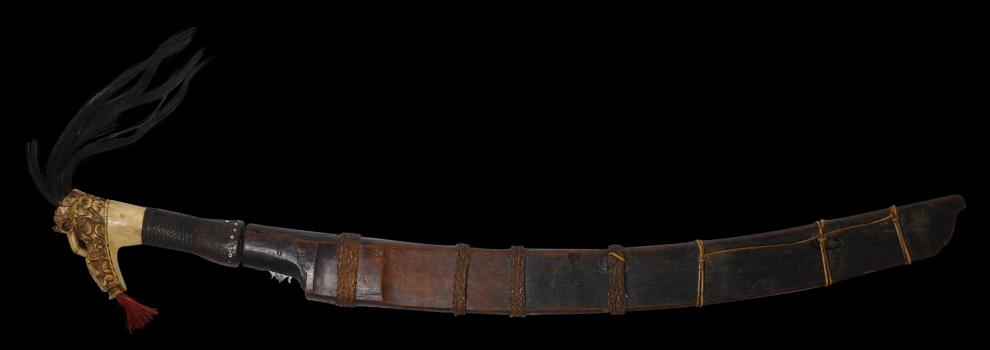

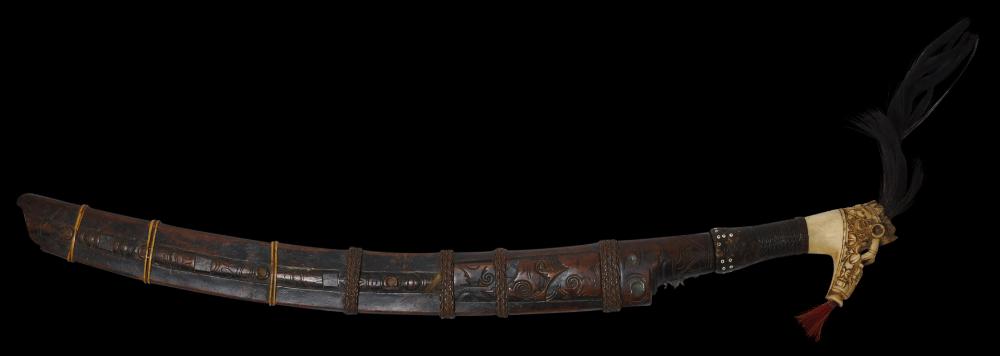
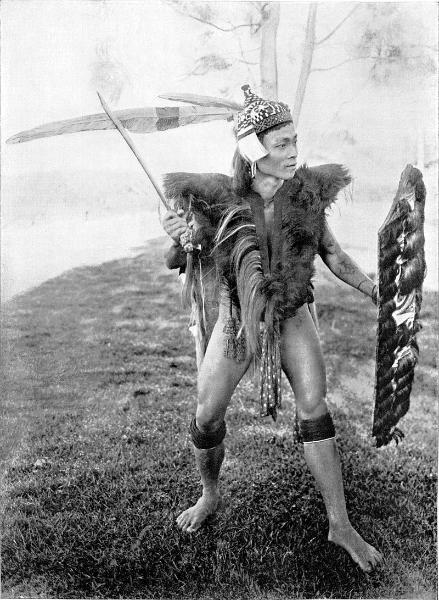
An Iban warrior photographed around 1912. He holds a mandau in his right hand.

